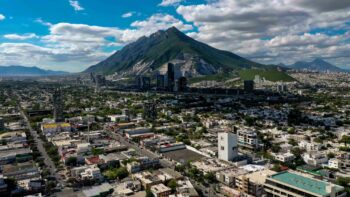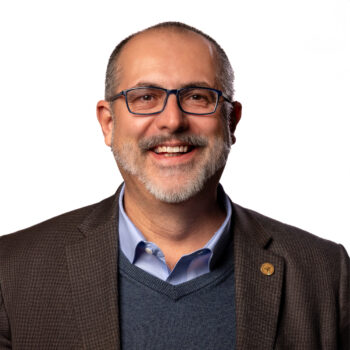Weekly Update
A sketch of Hispanic Baptist work in Texas
Jul 17, 2024
“Each of you is to take up a stone on his shoulder…to serve as a sign among you. In the future, when your children ask you, ‘What do these stones mean?’ tell them…These stones are to be a memorial to the people of Israel forever.” (Joshua 4:5b-7, NIV)

I write to you from Monterrey, Mexico, where I am preaching the evening sessions of the National Baptist Convention of Mexico. It is their 114th annual meeting and they are celebrating 160 years of Baptist work in Mexico. They are thankful for the current partnership with the Baptist General Convention of Texas.
I recently read in my devotional the account of the second generation of Israelites crossing the Jordan into the Promised Land. The Lord told them to build a monument for future generations. How important it is to tell the stories of how God worked in the past to the upcoming generations!
In last week’s update, I mentioned that I would share a brief sketch of the history of Hispanic Baptist work in Texas. Hispanic Baptist work in Texas is connected to the history of Baptist work in Mexico and both predate the formation of the BGCT.
Hispanic Baptist work in Texas was started in the late 1800s along the Mexico border by two brothers: Thomas M. Westrup and John Westrup.
Thomas M. Westrup, in his role with the New York Bible Society, had previously begun evangelistic work in Monterrey, Mexico. In 1862, Westrup invited James Hickey of Brownsville, Texas, to come and give leadership to this pioneer work in Monterrey.
On January 30, 1864, Thomas Westrup, Jose Maria and Arcadio Uranga, and James Hickey and his wife were baptized in Monterrey and organized the first Spanish-speaking evangelical church on the American continent. Thomas Westrup was its first pastor. During the following years their identity changed from Baptist to Presbyterian, and eventually back to Baptist.
By 1872, after this first evangelical church in Monterrey had a clearer Baptist identity, the Good Shepherd Presbyterian Church of Monterrey (where my grandparents were members, where my mom grew up, and where I attended preschool Sunday School) was established. And by the end of the 19th century Baptists had planted 150 churches throughout Mexico.
The first Hispanic Baptist church in Texas was established by Thomas M. Westrup in 1883 in Laredo. By then, he had been appointed as an American Baptist Home Mission Society missionary. The Monterrey and Laredo churches' initial connections were with American Baptists.
John Westrup, who was supported by the Southern Baptist Convention’s Foreign Mission Board at the request of the Baptist State Convention of Texas in 1880, had done evangelistic work along the Mexican side of the border. He intended to help establish the church in Laredo but he and a Mexican traveling companion were killed en route by bandits.
Shortly after the establishment of the Primera Iglesia Bautista Mexicana of Laredo, Spanish-speaking Baptist churches were established in San Antonio, Austin, San Angelo, and El Paso. They were not initially affiliated with any of the Baptist state conventions in Texas.
Meanwhile, on June 29, 1886, the Texas Baptist State Convention, the Baptist General Association, the East Texas Baptist Convention, and the Central Texas Baptist Convention consolidated and formed the Baptist General Convention of Texas. Hispanic Baptist work developed separately from the BGCT during this time.
By 1910 nine of the Hispanic Baptist churches in Texas with a total of about 360 members met in San Antonio to form the Mexican Baptist Convention of Texas, which later changed its name to the Hispanic Baptist Convention of Texas. Then, in 1961, the Mexican Baptist Convention of Texas merged with BGCT through a “unification agreement.”
The Hispanic Convention became a “department” or “fellowship” of the BGCT. Hispanic work continued to grow, and the unification of these two conventions proved fruitful.
Upon the centennial celebration in 2010, the Hispanic Baptist Convention of Texas under the leadership of its president at that time, Jesse Rincones, adopted articles of incorporation and bylaws that allowed it to become an actual convention again, instead of a fellowship. Even so, the Hispanic Convention and the BGCT continue to have a strong relationship as we serve Hispanic churches in Texas and as we reach the growing population of Hispanics for Christ.
History has shown us that together we can accomplish more. Sometimes as multiple conventions, sometimes as merged conventions, the spirit of unity, harmony, and a commitment to the Great Commission must be what drives us forward in God’s kingdom.
Thank you for your partnership, your prayers and your support for the sake of the gospel.

Dr. Guarneri is the 21st executive director of the Baptist General Convention of Texas. He holds degrees from Texas A&M University Kingsville, Southwestern Baptist Theological Seminary and Dallas Baptist University. He has more than 39 years of ministerial experience and is passionate about sharing the Gospel with the nations and cross-cultural missions and ministry.